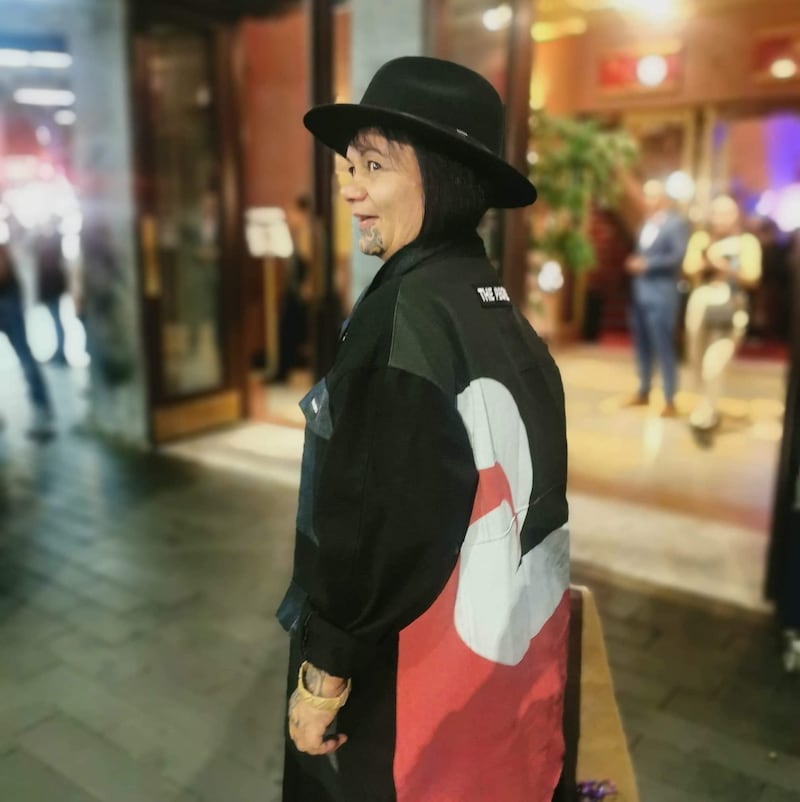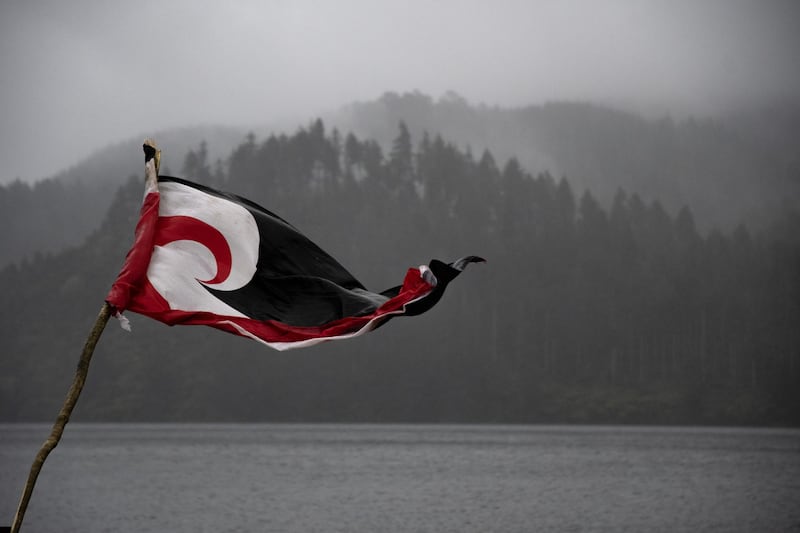A campaign is under way to protect the Tino Rangatiratanga flag, known around the world as a symbol of Māori culture.
The last living designer of the flag, Linda Munn has teamed up with Te Tuhi Māreikura Charitable Trust to obtain the intellectual property rights over the flag.
She says the flag is ‘widely misused and misappropriated’ and wants to put an end to any exploitation of the design that doesn’t benefit Māori.
Julie Paama-Pengelly from the trust said the misrepresentation mostly rears its head through commercial use.
“For the most part when we gather the flag and we use it in protest, we’re usually using it responsibly and our community will come out there and say something if we’re not.
“But, when it comes to the commercial domain, these people are just for the most part, there’s a lot of people who are taking the opportunity to make money.
“For us, that’s not a responsible representation of what the flag is.”

The sole remaining creator of the flag is campaigning for its protection against misuse and misappropriation, and her thoughts are still with her friends who are no longer with her.
“We have to acknowledge Te Kawariki and the families of Jan and Hiraina, that’s really important to me.
“We were then lucky enough to have Tuhi Māreikura who are steering this waka around succession safeguarding to teach our people, our own around the tikanga of Tino Rangatiratanga.”
Lynell Tuffery Huria from Kāhui Legal says she was part of a research project where she was tasked with interviewing Munn about her experiences with the flag.
“To provide a record of where we’ve come from, what the challenges are, what the intellectual property system challenges are and then how we might shift to a new regime of protection.
“That’s consistent with a te ao Māori perspective, that adopts and implements tikanga-based approach for addressing what is correct use and what is appropriate use.”
She said cultural heritage is not protected under intellectual property legislation and as a consequence it is misused.
“Most of the requirements under the intellectual property legislation are not conducive to protection of our cultural heritage.
“Our waiata, our haka because a lot of them were created before these acts came into force, and if they did they would have long expired.”
‘People think its a free for all’
Tuffery Huria said many companies have used Māori inspired logos.
In 2019, Air New Zealand was accused of cultural appropriation after they applied to trademark a logo labelled ‘Kia Ora’.
She said the flag has suffered like Māori cultural heritage from misuse and misappropriation in a wide number of ways.
“With the boosted campaign Te Tuhi Māreikura has started, it is an attempt to reclaim or bring back the whakapapa and bring back that narrative... to connect to that authentic Māori kaupapa.”
Mataia Keepa is one of many who have used the flag on his clothing label Indigenous Armour. One of the flag’s creators agreed to his use of the flag.
He says it’s only right that the rights of that flag are returned to its creators.
“Me mihi tērā hunga e pirangi ana kia hoki mai te mauri o tērā tohu ki roto ki tōna ao Māori, me te aha ko ia, ko rātou ngā mea tika ki te tō mai, ki te whakahoki mai te mauri o tērā tohu ā tātou ki ō rātou ringaringa tonu, nā te mea, nā ō rātou ringaringa tērā i waihanga. Ki ahau, ko rātou te ture, ko rātou te tiati mō te ahatanga o tērā tohu.”
We should acknowledge the group of people who are wanting to see the rights of that symbol back to Māori. Consequently, they are the right ones whose hands our symbol needs to be returned because it was their hands that created it. To me, they are the judges of what happens with that symbol.

The group campaigning against the misuse of the flag wants to return its property rights to those who created it and their next of kin but Keepa believes if the sale of these flags is no longer in street stores/cheap stores, Māori will find another way.
“Engari ahakoa pēhea ka kīa ahau he tangata kino mō tēnei kōrero. Kāre te Māori e whai i ērā ture, ki te kore e taea e ia tērā te hoko mai i te toa, ka peitahia e ia tana hīti, tana taora te aha noa rānei e pai ai tana whakatairanga i tōna Māoritanga.”
But no matter what happens, I might be called a bad person for this but Māori won’t follow those rules. If they are not able to buy them from the stores, they’ll paint their sheets, their towels, and whatever else so they can best express their Māori identity.
Keepa does understand the frustration of the misuse of the flag.
“Ko te wā e tū ai aku pihi, ko te whakamahia o tēnei haki e ētahi ehara i te Māori. Ki te whakatairanga i ā rātou kamupene mō te herengi te take.”
I get angry seeing the use of the flag from people who aren’t Māori. Advertising it for the companies for monetary gain.
‘We should be producing our own flags’
“These flags are all made in China that we’re buying why? Why are we not producing these flags ourselves for our communities to benefit from it,” Paama-Pengelly said.
The group fighting for this cause wants Māori to have control over the creation of this symbol, not leave it to foreigners.




